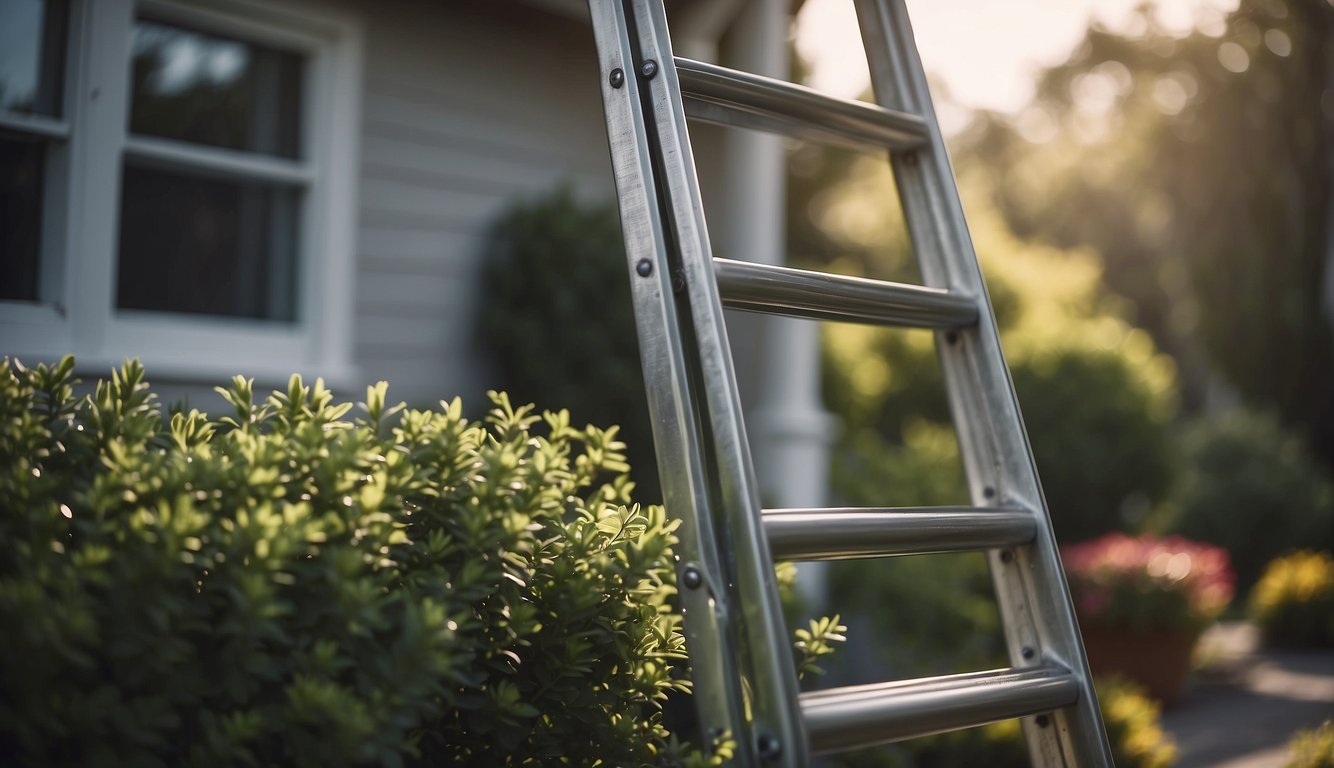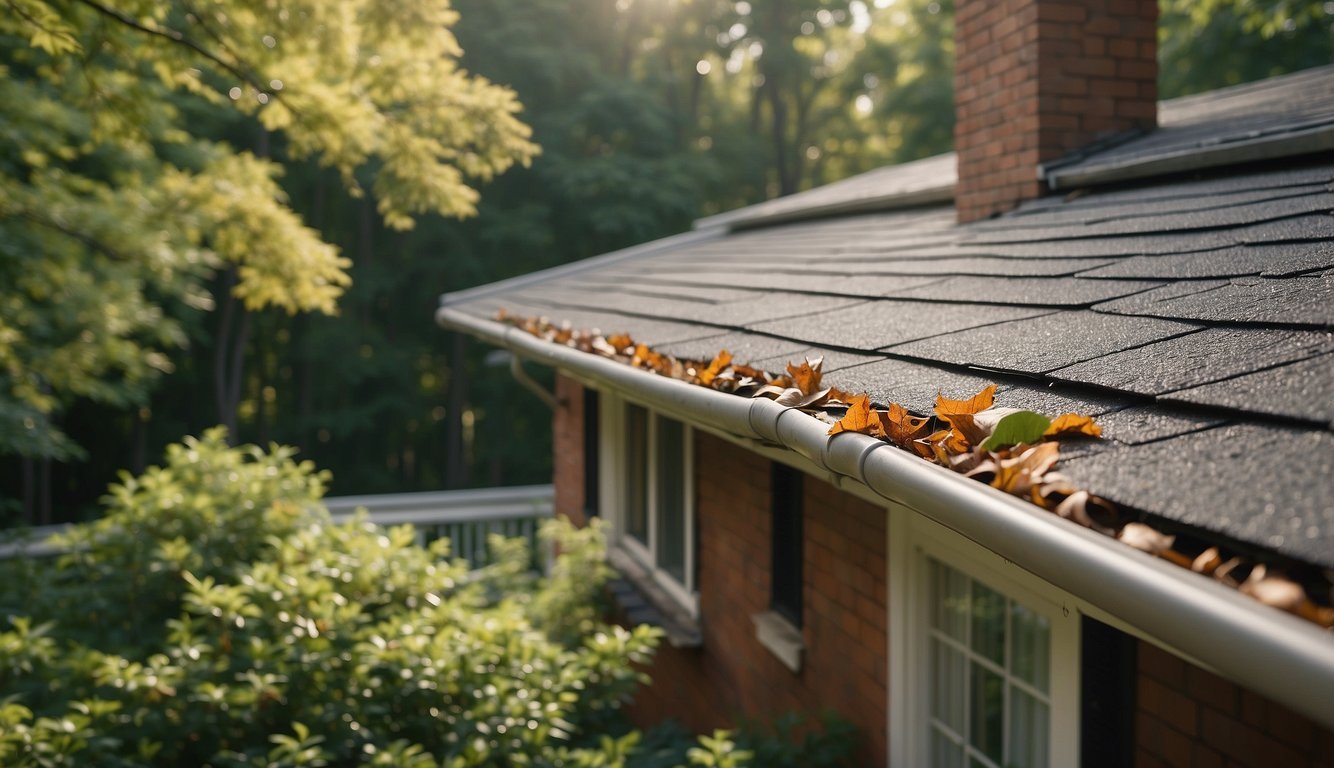How to Prevent Overflowing Gutters: Essential Maintenance Tips
Gutters play a critical role in directing rainwater away from your home’s foundation, protecting against water damage and soil erosion. Overflowing gutters, however, can undermine this defense, leading to a host of problems such as mold growth, pest infestation, and even structural issues. As experts in home maintenance, we understand the importance of keeping gutters functioning optimally.

To prevent gutters from overflowing, regular maintenance is key. This entails cleaning out leaves, twigs, and other debris that can clog the system, causing water to spill over. Ensuring that gutters are properly aligned, without sags or damage, aids in the smooth flow of water toward downspouts. In situations where heavy rain causes overflow, adding gutter guards or splash guards at the base of roof valleys can make a substantial difference in water management.
Moreover, checking that the gutter size fits the home’s needs is essential, especially in regions with heavy rainfall. If gutters are too small to handle the volume of water, they may require an upgrade. By tackling these aspects, you can significantly reduce the risk of gutter overflow and maintain the integrity of your home’s water drainage system.
Gutter Overflow
Overflowing gutters are more than just a nuisance; they can be indicative of underlying issues that may escalate into serious home damage. We’ll walk you through the causes, potential consequences, and the basic structure of your gutter system to provide you with the knowledge needed to prevent overflow.
Causes of Overflowing Gutters
- Debris Accumulation: The primary culprit for gutter overflow is usually leaves, twigs, and other debris that collect and create clogs, preventing water from flowing smoothly.
- Regular debris: Leaves and twigs
- Seasonal debris: Seed pods, flower petals, pine needles
- Improperly Sized Gutters: If the gutters are too small for the surface area of your roof, they can’t handle heavy rainfall.
- Misaligned Gutters: Incorrectly pitched gutters prevent water from flowing adequately toward the downspouts.
| Common Debris Types | Effects on Gutters |
|---|---|
| Leaves | Block water flow |
| Twigs | Form barriers |
| Dirt & Sediment | Settle and build up |
Consequences of Overflow
- Water Damage: Overflow can result in water spilling over gutter edges, leading to damage on walls, windows, and doors.
- Foundation Problems: Prolonged exposure to water can weaken your home’s foundation, posing structural risks.
| Overflow Consequences | Affected Areas |
|---|---|
| Water Damage to Roof | Shingles, underlayment |
| Damage to Exterior Walls | Siding, paint |
| Basement Flooding | Foundation, interiors |
Anatomy of a Gutter System
- Gutters: Horizontal channels that catch rainwater from the roof edge.
- Downspouts: Vertical pipes that direct water away from your home’s foundation.
- Gutter Guards: Devices designed to keep debris out while letting water in.
Understanding each part’s role ensures proper maintenance and prompt identification of issues that could lead to overflow.
| Gutter System Component | Function |
|---|---|
| Gutters | Collect water from roof |
| Downspouts | Channel water to safe disposal area |
| Gutter Guards | Prevent debris from entering system |
Regular Maintenance and Cleaning
We know that the key to preventing overflowing gutters is consistent maintenance and cleaning. Let’s jump right in and tackle the fundamentals and strategies for keeping those gutters clear.
Gutter Cleaning Fundamentals
Frequency: We recommend cleaning your gutters at least twice a year, typically in the spring and fall, to avoid debris accumulation and potential clogs.
| Season | Task |
|---|---|
| Spring | Remove winter debris, check for damage |
| Fall | Clear fallen leaves, ensure downspouts are clear |
Tools: For a thorough cleaning, you can use a ladder, gloves, a gutter scoop, or a garden hose to flush out any smaller particles.
Debris and Clog Prevention
To keep clogged gutters at bay, it’s crucial to:
- Install Gutter Guards: These act as a filter, keeping leaves and large debris out while allowing water to drain.
- Trim Nearby Trees: Regularly trimming back branches reduces the amount of leaves and twigs that fall into the gutters.
Inspect Regularly: Even with gutter guards, we should still perform visual checks, particularly after strong storms or windy days.
By following these actionable steps for regular maintenance and debris prevention, we set ourselves up to avoid the common pitfalls that lead to overflowing gutters.
Gutter Guards and Protective Measures

Protecting your gutters from blockages due to leaves, pine needles, and bird nests is crucial to preventing overflow. We’ll explore how gutter guards offer a solution, the types available, and tips on installation to ensure effective gutter management.
Benefits of Gutter Guards
Gutter guards serve as a barrier, preventing debris build-up that can impede water flow and cause gutters to overflow. Their advantages include:
- Maintenance Reduction: They reduce the need for frequent gutter cleaning.
- Protection: Guards keep out leaves, pine needles, and even bird nests.
- Prevention of Clogs: With gutter guards, water flows smoothly, minimizing the chances of overflow.
Types of Gutter Guards
There are several types of gutter guards designed to suit different environments and gutter types:
- Screens: These fit over the top of gutters to block large debris while allowing water to pass through.
- Mesh: Similar to screens but with smaller holes that can stop pine needles.
- Foam: Foam inserts fit directly into the gutter, letting water seep through while blocking debris.
- Surface Tension: These work by directing water into the gutter while debris falls over the edge.
Selecting the right type is key to functionality. Mesh and screen guards are useful in areas with pine trees, while surface tension guards might be better for heavy rainfall regions.
Installation of Gutter Guards
Correct installation of gutter guards is critical to their effectiveness:
- Measure: Accurately measure the length of the gutters to determine how many guards you need.
- Clean: Thoroughly clean the gutters before installation to ensure the guards function properly.
- Fit: Guards should be securely fitted to the gutter, ensuring they’re flush to prevent debris entry.
- Fine-tuning: After the first rain, check if adjustments are needed to maximize water flow.
For surface tension guards, it’s often best to enlist professional help given their specific installation requirements. Properly installed guards can save time and protect your home from water damage due to gutter overflow.
By taking these proactive steps, we can effectively prevent overflowing gutters and maintain the integrity of our home’s drainage system.
Proper Gutter Installation and Repair
In ensuring that gutters function effectively, correct installation and timely repairs are paramount. A well-installed gutter system prevents overflow, while repairing any damage avoids water-related complications.
Correct Gutter Pitch and Sizing
Gutter Pitch: For optimal water flow, we ensure that gutters have a slight pitch towards the downspouts. The standard is a gentle slope of 1/4 inch for every 10 feet of guttering. This precision allows water to flow smoothly, preventing pooling and the subsequent overflow that can occur with incorrect gutter installation.
Gutter Sizing: We assess and install gutters that are appropriately sized for your home. A small gutter cannot handle large volumes of water, just as oversized gutters can lead to sagging. Correct sizing involves calculating roof square footage and local rainfall intensity to select a gutter size that will effectively manage water runoff.
Identifying and Fixing Damaged Gutters
Detecting Damage:
- Visual Inspection: We look for signs such as cracks, holes, rust, and sagging, which indicate gutter repairs are needed.
- Performance Check: Conducting water tests can reveal issues with water flow and drainage.
- Sagging Gutters: When gutters sag, we reinforce them with hangers or repair brackets to restore proper alignment.
- Seals and Joints: We inspect seals and joints for leakage and apply sealant or replace fittings as necessary to ensure a watertight system.
Following these guidelines, we address the common causes of gutter overflow with a focus on proper installation and maintenance to protect your home’s foundation and landscaping from water damage.
Advanced Tips and Solutions
To effectively prevent gutter overflows, it’s crucial to employ certain advanced measures and accessories. These not only enhance the functionality of your gutters but also safeguard your home against water damage.
Splash Guards and Accessories
Splash guards play a critical role in directing the flow of water, especially at the junction of roof valleys where water can pool and lead to overflow. Install these guards at these critical points to ensure water is channeled appropriately into the gutters. Additionally, gutter accessories like leaf strainers and gutter brush guards can be beneficial in keeping debris out.
Gutter Guards:
- Leaf Strainer: Prevents leaves and large debris from entering the downspout.
- Gutter Brush: Fits into the gutter channel and prevents debris while allowing water to flow through.
Professional Inspections and Assessments
Regular inspections by professional gutter services can help identify and mitigate potential overflow issues before they become problematic. Professionals can provide expert advice on the condition of your gutters and recommend tailored solutions. An annual or biannual inspection ensures that any minor issues can be addressed promptly, maintaining the integrity and functionality of your gutter system.
Here’s what the professionals look for:
- Structural integrity: Ensuring that gutters are properly attached and free of damage.
- Drainage efficiency: Checking for the correct slope and any sagging areas that could impede water flow.
Incorporating these advanced tips and solutions into your gutter maintenance routine will greatly reduce the risk of overflow, protecting your home from the damage that can be caused by poorly managed rainwater.
Let Us Know How We’re Doing!
Did this expertly prepared resource answer your question?
Do you have another question about home maintenance, home improvement projects, home appliance repair, or something else?
Get more information, send in questions and keep the discussion going by contacting the I’ll Just Fix It Myself company customer service team at at 1-800-928-1490 or Email us at [email protected]
